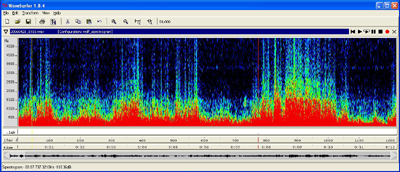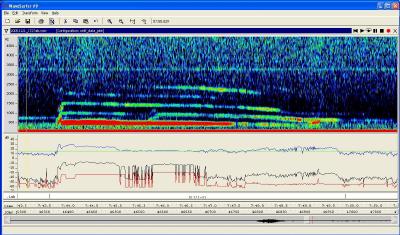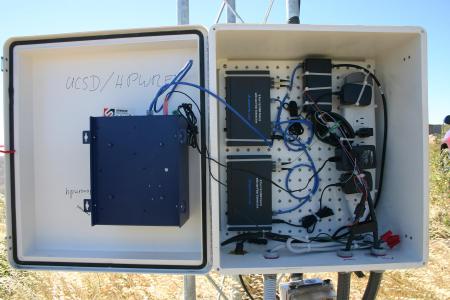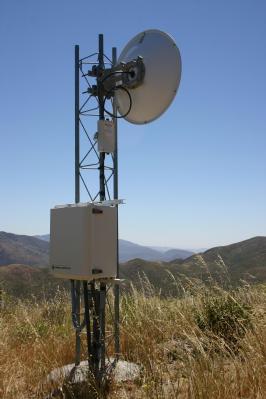
|
|
May 10, 2006
HPWREN Enables SDSU Research Team to Conduct Bioacoustics Studies at California Wolf Center For the past year San Diego State University researchers Marie Roch and Deborah Curless have been gathering and analyzing data in collaboration with the California Wolf Center - thanks to bioacoustic sensors connected via HPWREN. Roch and Curless are examining techniques to automatically filter useful audio data so that biologists aren't required to listen to an endless amount of recordings when looking for something specific - like wolf howls versus barks.
"We're currently working on ways to filter out human sounds and environmental factors, such as wind, with our system at the Wolf Center," explains Roch, an assistant professor of computer science at SDSU. "Although the cost of acoustic sensors has come down to a reasonable price for most research teams, there are a number of challenges associated with their deployment. The development of intelligent sensors has benefits to both the network and to the people who use them. A sensor that can reduce network traffic by prioritizing and sending only useful data is a significant network asset. For the end user, the categorization of the audio signal allows biologists to quickly locate useful sounds from wildlife recordings so that they can study the data that is most important to them."
Roch, Curless, and Melissa Soldevilla from John Hildebrand's lab at Scripps Institution of Oceanography wrote a software package that performs the signal detection task and determines when wolf calls (or other interesting sounds) are occurring at the Wolf Center. Not only does this assist biologists at the Center, but it also uses the HPWREN bandwidth more efficiently. "That is, rather than recording 24/7, the sensors we have at the Center are now only recording useful sounds," says Curless. "Before this software implementation, we were using a great deal of bandwidth across HPWREN, but now we are able to make our network use more efficient with this filtration package."


While the top spectrogram includes acoustics data with a great deal of wind noise, the bottom graph illustrates wolf vocalizations with no wind noise in the background. Click on each image to listen.
Additional HPWREN News articles regarding the Wolf Center are available at the following URLs:
Take a look at the HPWREN web-accessible camera located at the California Wolf Center:
Photographs of the Wolf Center are available at:
For more information regarding the California Wolf Center, please see their website at http://www.californiawolfcenter.org/.
- Kimberly Mann Bruch | ||||||


